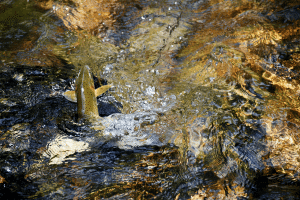
We know the same approach works with species that we don’t hunt or fish. From salamanders to prairie dogs to songbirds, the principles are the same: protecting habitat and managing threats according to the best science keeps wildlife abundant. Preventing at-risk species from declining to the brink of extinction has another benefit: it can avoid the need to put species on the federal Endangered Species list, and all the regulatory headaches that come with that law.
For the last 20 years, the Montana Department of Fish, Wildlife and Parks (FWP) has implemented a best-in-the-nation program to conserve nongame species that has done exactly that. And, in fact, these efforts have helped keep species abundant and prevent endangered species listings for animals like the Arctic grayling, black-tailed prairie dog, and northern leopard frog.
Unfortunately, current funding to prevent wildlife from becoming endangered is just a drop in the bucket and varies from year to year depending on the whims of Congress. For every success, there are dozens of more species waiting in the wings.
The Recovering America’s Wildlife Act would fix this situation and permanently increase funding to prevent wildlife from becoming endangered to the tune of $1.4 billion/year.
The Recovering America’s Wildlife Act is modeled after the Pittman-Robertson Wildlife Restoration Act and Dingell-Johnson Sportfish Restoration Act. These programs dedicate revenue from excise taxes on firearms, ammunition, archery equipment and fishing tackle to state fish and wildlife agencies. Pittman-Robertson and Dingell-Johnson have been wildly successful over the last 80 years, reinvesting the taxes paid by hunters and anglers into managing game and fish species, sustaining our hunting and fishing heritage in Montana and nationwide. The Recovering America’s Wildlife Act would extend this model to the hundreds of species that aren’t hunted or fished.
When passed, the Recovering America’s Wildlife Act will mean about $30 million in new funding every year for FWP. This funding would mean FWP could do more to protect habitat, collect scientific data, and conserve species on public and private lands. By conserving wildlife before they become imperiled, this new funding would save taxpayers funds and hopefully reduce conflicts over the federal Endangered Species Act.
The Recovering America’s Wildlife Act currently has more than 100 cosponsors from both parties. But Congressman Greg Gianforte has not yet agreed to cosponsor the bill. Send a message to him today asking him to cosponsor the Recovering America’s Wildlife Act to prevent wildlife from becoming endangered. It’s good for wildlife and people.

